Newsworthy events for the new year: General Motors may be shifting its focus away from the Chevrolet Volt and other plug-in hybrids and onto battery electric 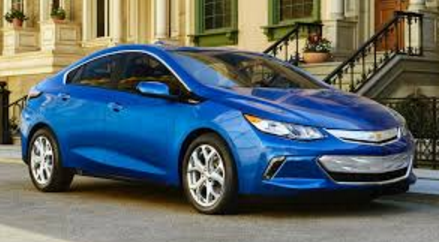 vehicles like the Chevrolet Bolt. The company is reportedly looking at ending production of the Volt in 2022, according to a report by AutoForecast Solutions. Sluggish sales of the Volt, and improvements made to battery packs in range and cost, are influencing GM management to phase of out of plug-in hybrids. By now, GM had been expected to launch spin-offs based on the Volt drivetrain, but the business plan has instead shifted over to rolling out two more all-electric vehicles over the next 10 months. At least 20 all-electric or fuel-cell models are due to come out by 2023……….. The health impact on humans from air pollution has been researched in a Journal of the American Medical Association (JAMA) study, finding it contributes to more than 20,000 fatalities a year in the U.S. The study used Medicare files and air pollution data looking at fatalities between 2000 and 2012; the study found that day-to-day increases in air pollution, even at levels that had been considered acceptable, have devastating consequences. Those impacted had lived in areas with greater exposure to fine particulate matter (PM 2.5), which are small particles of soot that easily enter the lungs and bloodstream………… China has seen the impact of a rapidly growing vehicle population in recent years, with heavy air pollution setting off hazard warnings in cities like Beijing. The government is adding another measure to fight off air pollution by ending sales of 553 vehicle models that don’t meet fuel-consumption standards. Beginning January 1, production has been halted of the 553 models, according to Bloomberg News. That list includes models made by Audi, Beijing Benz, and Chevrolet…………. Tesla will be adding electric pickup trucks to its lineup, according to CEO Elon Musk. That will happen after the Model Y electric crossover is launched, he said. It will be the size of a Ford F-150. “I promise that we will make a pickup right after Model Y. Have had the core design/engineering elements in my mind for almost 5 years. Am dying to build it,” Musk tweeted last week Tuesday………… North Korea will see its oil supply reduced through a United Nations-imposed sanction in response to the country’s nuclear weapon testing program. South Korean authorities last week seized a second ship that was suspected of supplying oil to North Korea in violation of the international sanctions, officials told BBC. The oil tanker, with its Panama flag, is being held at a port town near the western city of Pyeongtaek. South Korea had already impounded a Hong Kong-registered ship that was suspected of delivering 600 tons of refined oil to a North Korean vessel.
vehicles like the Chevrolet Bolt. The company is reportedly looking at ending production of the Volt in 2022, according to a report by AutoForecast Solutions. Sluggish sales of the Volt, and improvements made to battery packs in range and cost, are influencing GM management to phase of out of plug-in hybrids. By now, GM had been expected to launch spin-offs based on the Volt drivetrain, but the business plan has instead shifted over to rolling out two more all-electric vehicles over the next 10 months. At least 20 all-electric or fuel-cell models are due to come out by 2023……….. The health impact on humans from air pollution has been researched in a Journal of the American Medical Association (JAMA) study, finding it contributes to more than 20,000 fatalities a year in the U.S. The study used Medicare files and air pollution data looking at fatalities between 2000 and 2012; the study found that day-to-day increases in air pollution, even at levels that had been considered acceptable, have devastating consequences. Those impacted had lived in areas with greater exposure to fine particulate matter (PM 2.5), which are small particles of soot that easily enter the lungs and bloodstream………… China has seen the impact of a rapidly growing vehicle population in recent years, with heavy air pollution setting off hazard warnings in cities like Beijing. The government is adding another measure to fight off air pollution by ending sales of 553 vehicle models that don’t meet fuel-consumption standards. Beginning January 1, production has been halted of the 553 models, according to Bloomberg News. That list includes models made by Audi, Beijing Benz, and Chevrolet…………. Tesla will be adding electric pickup trucks to its lineup, according to CEO Elon Musk. That will happen after the Model Y electric crossover is launched, he said. It will be the size of a Ford F-150. “I promise that we will make a pickup right after Model Y. Have had the core design/engineering elements in my mind for almost 5 years. Am dying to build it,” Musk tweeted last week Tuesday………… North Korea will see its oil supply reduced through a United Nations-imposed sanction in response to the country’s nuclear weapon testing program. South Korean authorities last week seized a second ship that was suspected of supplying oil to North Korea in violation of the international sanctions, officials told BBC. The oil tanker, with its Panama flag, is being held at a port town near the western city of Pyeongtaek. South Korea had already impounded a Hong Kong-registered ship that was suspected of delivering 600 tons of refined oil to a North Korean vessel.
Green Auto Market resources for the new year:
- Sponsorship program reaching stakeholders in clean transportation who read Green Auto Market.
- Subscribing to Green Auto Market Extended Edition for weekly data analysis on green car sales, regulatory issues, global market trends, energy, and emerging mobility companies and technologies. See the article below on reaching consumers through practical methods, which comes from the recent edition of GAM EE on key trends from 2017 extending into the new year.
- Market research firms and strategic planning consultants have interviewed GAM editor Jon LeSage on electric vehicle sales trends, consumer attitudes on the technology, the challenges that fuel cell vehicles face, and automaker partnerships with tier one suppliers.
- Contact jon at jon@jonlesageconsulting.com for more information.
Consumers more interested in practical than theoretical when buying cars
Jumpstart Automotive Media released a report in December analyzing the impact that a  revised strategy being tried out at auto shows is having on car shopping. Events such as the LA Auto Show have been less about the wonders of far-out advanced technology, and more about bringing to life the innovations found in today’s vehicles. Learning more about the new vehicles and their capabilities goes far beyond those visiting the showrooms, with millions of consumers gaining digital access to the car shows online. Cars are coming equipped with interactive systems like Apple’s Siri and Amazon’s Alexa that allow for verbal commands and touch screens simplifying the process — and getting car owners to see new possibilities coming through the technology. Connected car systems are expected to be the gateway to fully autonomous vehicles coming to roads over the next decade. Today, drivers can tap into mobility functions to manage charging their electric vehicle through voice commands, and to find out about available public charging spots.
revised strategy being tried out at auto shows is having on car shopping. Events such as the LA Auto Show have been less about the wonders of far-out advanced technology, and more about bringing to life the innovations found in today’s vehicles. Learning more about the new vehicles and their capabilities goes far beyond those visiting the showrooms, with millions of consumers gaining digital access to the car shows online. Cars are coming equipped with interactive systems like Apple’s Siri and Amazon’s Alexa that allow for verbal commands and touch screens simplifying the process — and getting car owners to see new possibilities coming through the technology. Connected car systems are expected to be the gateway to fully autonomous vehicles coming to roads over the next decade. Today, drivers can tap into mobility functions to manage charging their electric vehicle through voice commands, and to find out about available public charging spots.

 making profits building and selling electric vehicles. General Motors CEO Mary Barra yesterday told investors at the Barclays Global Automotive Conference in New York that the company in 2021 will be launching a new, flexible platform for electric vehicle launches that will bring down costs and increase profits. The new EV platform will accommodate multiple sizes and segments, to be sold by different GM brands in the U.S. and China, she said. A new battery system will bring down costs 30% cheaper than the battery pack used in the Chevy Bolt, Barra said. The automaker will be building at least one million EVs a year by 2026, with most going into China to comply with new energy vehicle regulations. Last month, GM said it planned to launch 20 new electric vehicles by 2023, but did not provide details…………
making profits building and selling electric vehicles. General Motors CEO Mary Barra yesterday told investors at the Barclays Global Automotive Conference in New York that the company in 2021 will be launching a new, flexible platform for electric vehicle launches that will bring down costs and increase profits. The new EV platform will accommodate multiple sizes and segments, to be sold by different GM brands in the U.S. and China, she said. A new battery system will bring down costs 30% cheaper than the battery pack used in the Chevy Bolt, Barra said. The automaker will be building at least one million EVs a year by 2026, with most going into China to comply with new energy vehicle regulations. Last month, GM said it planned to launch 20 new electric vehicles by 2023, but did not provide details…………  recognized more than Warren Buffet, Jeff Bezos, Mark Zuckerberg, and Richard Branson combined. He’s been on the cover of
recognized more than Warren Buffet, Jeff Bezos, Mark Zuckerberg, and Richard Branson combined. He’s been on the cover of  reported Friday. The other five would be the Buick LaCrosse, Cadillac CT6, Cadillac XTS, Chevrolet Impala, and Chevrolet Sonic. GM declined to comment. Pressure from shareholders to increase sales may have GM tipping more to pickups, crossovers, and SUVs. It would be a shame to see, with the redesigned Volt doing well in sales – No. 3, close behind the Tesla Model S in the first six months of U.S. sales.
reported Friday. The other five would be the Buick LaCrosse, Cadillac CT6, Cadillac XTS, Chevrolet Impala, and Chevrolet Sonic. GM declined to comment. Pressure from shareholders to increase sales may have GM tipping more to pickups, crossovers, and SUVs. It would be a shame to see, with the redesigned Volt doing well in sales – No. 3, close behind the Tesla Model S in the first six months of U.S. sales. upcoming EMotion sporty, luxury sedan. The company would have had to focus entirely on Fisker and let other client projects slip away, which won’t work for the company to do, said Jack Kavanaugh, chairman and acting CEO of Nanotech Energy. That JV had started with the Henrik Fisker starting his new electric car company in October. The automaker will continue to “work with Nanotech on the applications of graphene,” but it will use battery cells provided by LG Chem for the EMotion, Fisker said.
upcoming EMotion sporty, luxury sedan. The company would have had to focus entirely on Fisker and let other client projects slip away, which won’t work for the company to do, said Jack Kavanaugh, chairman and acting CEO of Nanotech Energy. That JV had started with the Henrik Fisker starting his new electric car company in October. The automaker will continue to “work with Nanotech on the applications of graphene,” but it will use battery cells provided by LG Chem for the EMotion, Fisker said.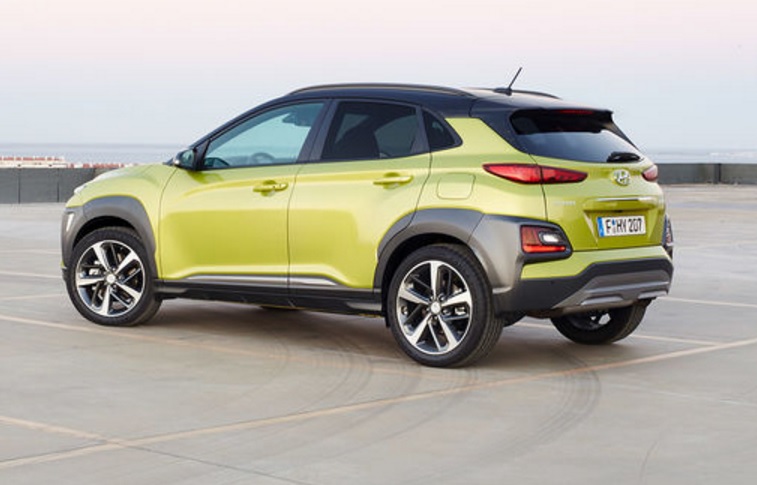 surge of 59% in sales during that five-year period. It was less for light-duty trucks with less than 10% increase in fuel economy, with 41% seeing an increase in sales during that period. The Toyota RAV4 is a clear example of the trend by increasing in mileage by 10 percent in that time – with a nearly 220,000 unit increase, a 166% gain, in annual vehicle sales. The consumer group sees the federal fuel economy standards moving truck fuel efficiency forward and sales of pickups, crossovers, and SUVs. “This analysis completely debunks automaker claims that consumers don’t value good gas mileage,” said Jack Gillis, CFA’s director of public affairs. “Clearly, the more improvement in MPG, the better the sales.”
surge of 59% in sales during that five-year period. It was less for light-duty trucks with less than 10% increase in fuel economy, with 41% seeing an increase in sales during that period. The Toyota RAV4 is a clear example of the trend by increasing in mileage by 10 percent in that time – with a nearly 220,000 unit increase, a 166% gain, in annual vehicle sales. The consumer group sees the federal fuel economy standards moving truck fuel efficiency forward and sales of pickups, crossovers, and SUVs. “This analysis completely debunks automaker claims that consumers don’t value good gas mileage,” said Jack Gillis, CFA’s director of public affairs. “Clearly, the more improvement in MPG, the better the sales.”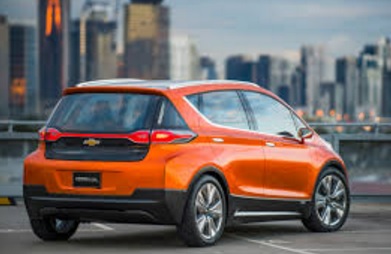 tests and a “Superior” score for front crash prevention. The institute said that the Bolt was the first all-electric vehicle to earn the pick for 2017. Among small cars, the Bolt joins 11 other nameplates as Top Safety Picks, including the 2017 Chevy Volt. the National Highway Traffic Safety Administration will still need to crash test the Bolt.
tests and a “Superior” score for front crash prevention. The institute said that the Bolt was the first all-electric vehicle to earn the pick for 2017. Among small cars, the Bolt joins 11 other nameplates as Top Safety Picks, including the 2017 Chevy Volt. the National Highway Traffic Safety Administration will still need to crash test the Bolt.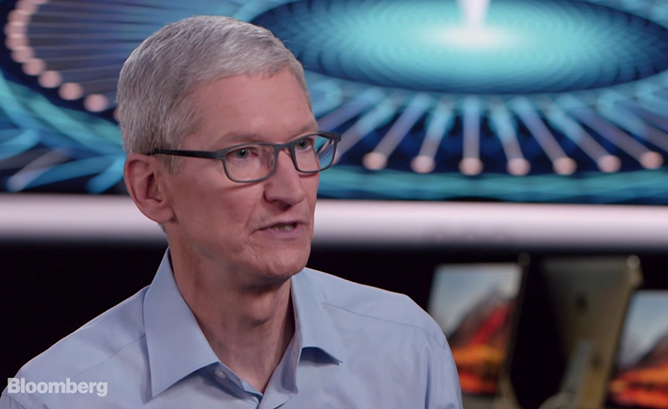 speculation over whether Apple will one day take its secret Project Titan electric autonomous car to its own factories. Cook wouldn’t speak to that topic, but did admit that autonomous vehicles is one of three technologies directing artificial intelligence in Silicon Valley – up there with electric vehicles and ride-hailing services. “We sort of see it as the mother of all AI projects,” Cook said. “It’s probably one of the most difficult AI projects actually to work on.”
speculation over whether Apple will one day take its secret Project Titan electric autonomous car to its own factories. Cook wouldn’t speak to that topic, but did admit that autonomous vehicles is one of three technologies directing artificial intelligence in Silicon Valley – up there with electric vehicles and ride-hailing services. “We sort of see it as the mother of all AI projects,” Cook said. “It’s probably one of the most difficult AI projects actually to work on.” now capable of mass producing autonomous Bolts and other self-driving models. CEO Mary Barra has said GM is the only automaker capable of building high-volume autonomous vehicles in its assembly plant. GM will also working with ride-hailing firm Lyft on testing these vehicles with Lyft drivers.
now capable of mass producing autonomous Bolts and other self-driving models. CEO Mary Barra has said GM is the only automaker capable of building high-volume autonomous vehicles in its assembly plant. GM will also working with ride-hailing firm Lyft on testing these vehicles with Lyft drivers.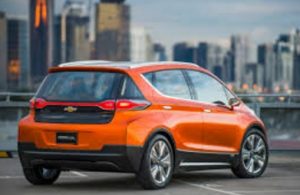 Plug-in sales trends and new car launches: Plug-in hybrid was the top-selling category over all-electric vehicles in 2016, which switched over a sales trend that had been led by the Tesla Model S and Model X, and Nissan Leaf, in all-electric vehicle sales. The revamped 2016 Chevy Volt has been the top seller in the U.S. and the Ford Fusion Energi nearly doubled its sales in November over the previous year. The Mitsubishi Outlander PHEV has been leading the electric vehicle market this year in Europe, beating the Renault Zoe and Nissan Leaf.
Plug-in sales trends and new car launches: Plug-in hybrid was the top-selling category over all-electric vehicles in 2016, which switched over a sales trend that had been led by the Tesla Model S and Model X, and Nissan Leaf, in all-electric vehicle sales. The revamped 2016 Chevy Volt has been the top seller in the U.S. and the Ford Fusion Energi nearly doubled its sales in November over the previous year. The Mitsubishi Outlander PHEV has been leading the electric vehicle market this year in Europe, beating the Renault Zoe and Nissan Leaf.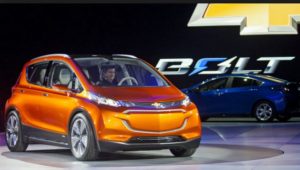 Bolt launch: The Chevy Bolt is back on track
Bolt launch: The Chevy Bolt is back on track 